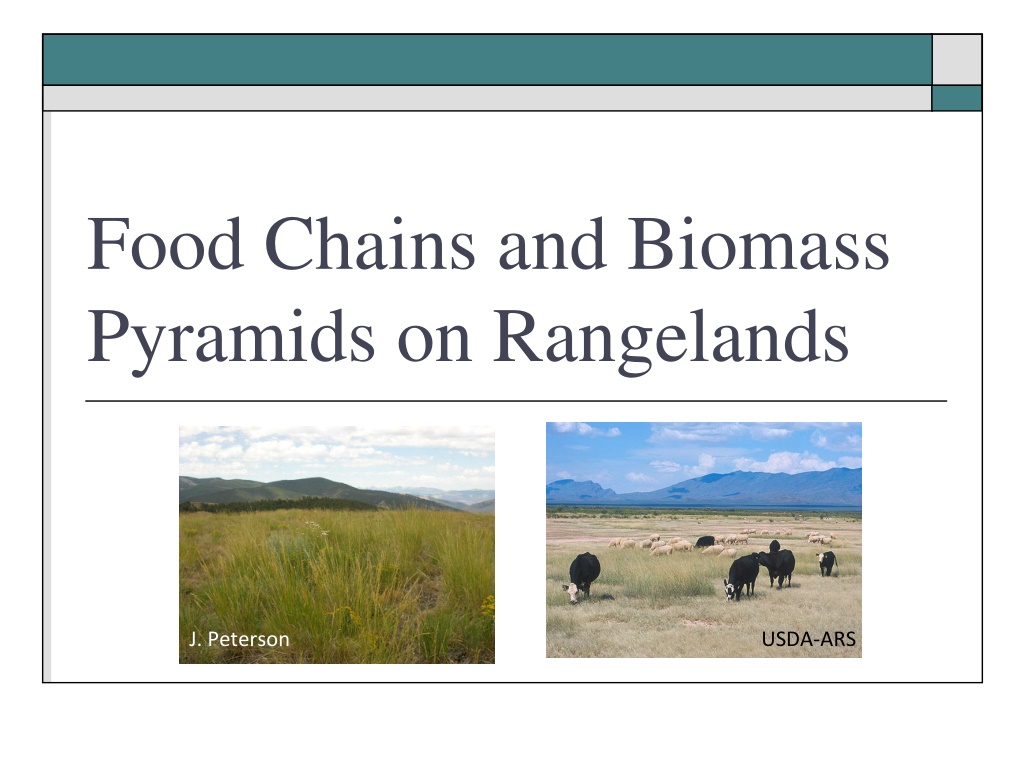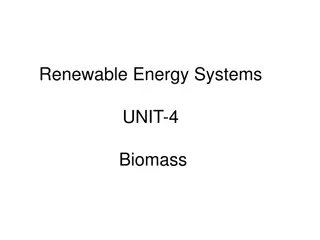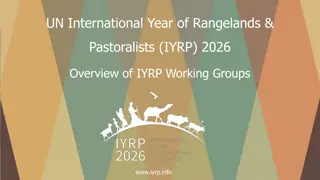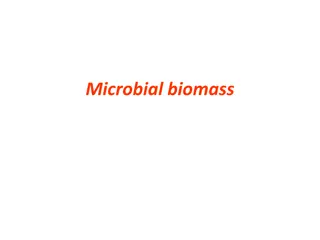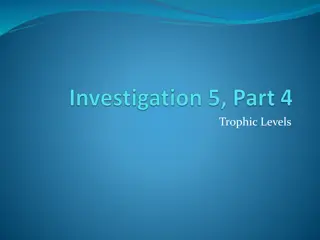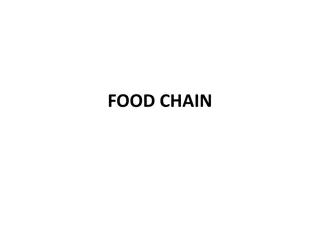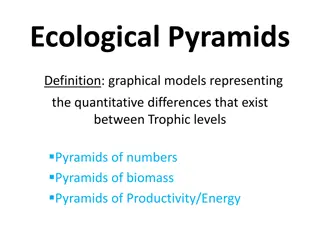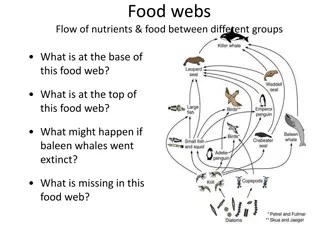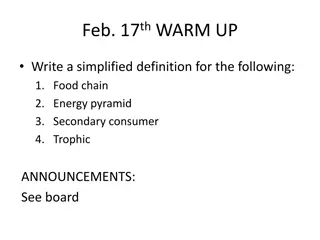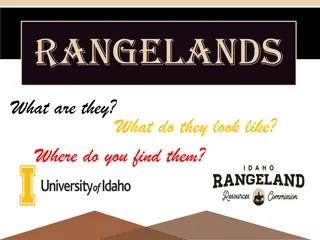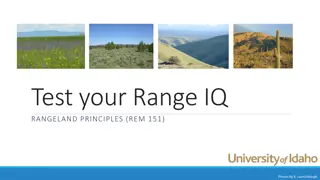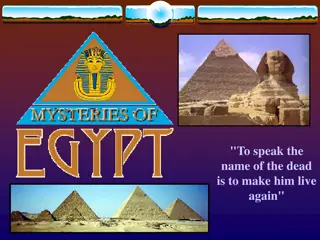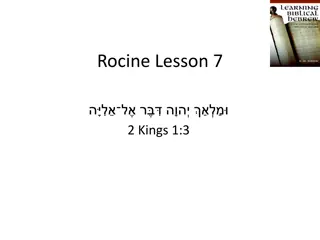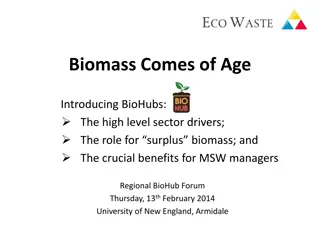Understanding Food Chains, Trophic Levels, and Biomass Pyramids on Rangelands
Explore the intricate dynamics of food chains, trophic levels, and biomass pyramids on rangelands through informative visuals and explanations. Learn how energy flows through different levels, the concept of biomass pyramids, and the impact of vegetarianism on food chains and energy efficiency.
Download Presentation

Please find below an Image/Link to download the presentation.
The content on the website is provided AS IS for your information and personal use only. It may not be sold, licensed, or shared on other websites without obtaining consent from the author. Download presentation by click this link. If you encounter any issues during the download, it is possible that the publisher has removed the file from their server.
E N D
Presentation Transcript
Food Chains and Biomass Pyramids on Rangelands J. Peterson USDA-ARS
Trophic Levels Feeding levels with respect to primary source of energy Producers & consumers each occupy a different trophic level Energy is lost at each level
Trophic Levels and grasslands http://www.youtube.com/watch?v=3Bn7wdCP2v4
Biomass Pyramid The total weight of all living organisms Biomass at each trophic level biomass pyramid Biomass pyramid (grams/m2) 1.5 Top carnivores 11 Primary carnivores 37 Herbivores Detrivores/ decomposers 809 Producers 5
Trophic Levels 1st Trophic Level Producers Plants 2nd Trophic Level Primary Consumers Herbivores 3rd Trophic Level Secondary Consumers Carnivores HEAT HEAT Decomposer
Biomass Pyramids 3rd Trophic Level Carnivores HEAT HEAT 2nd Trophic Level Herbivores 1st Trophic Level Producers Plants Decomposer
Biomass Pyramids 3rd Trophic Level Carnivores HEAT HEAT 2nd Trophic Level Herbivores 1st Trophic Level Producers Plants Decomposer
Biomass Pyramids HEAT At each level some biomass is not passed to next higher level HEAT Decomposer
Biomass decreases at higher trophic levels Not all biomass is passed from one trophic level to next Not all is consumed Not all that is consumed is digestible Not all that is digested is turned into mass Part of mass is converted to energy or heat Lost mass is available for decomposition
Vegetarian Solution? Shorter food chain/web = less loss of energy Vegetarianism results in a decrease of human position on food chain. Is vegetarianism is the best way to feed a large population? Will this solve the world food problem?
Two Good Reasons 1) Cellulose most abundant, naturally occurring organic molecule on earth Humans can t digest cellulose, Ruminants & Hind-gut fermentors can. We need cows, sheep, goats, horses, llamas, alpacas, etc. to digest cellulose for us. Drawing by Mike Hale 2) Only about 10% of the earth land surface can be farmed. The rest is too rocky, too cold, or too dry. We need animals to harvest these land for us.
